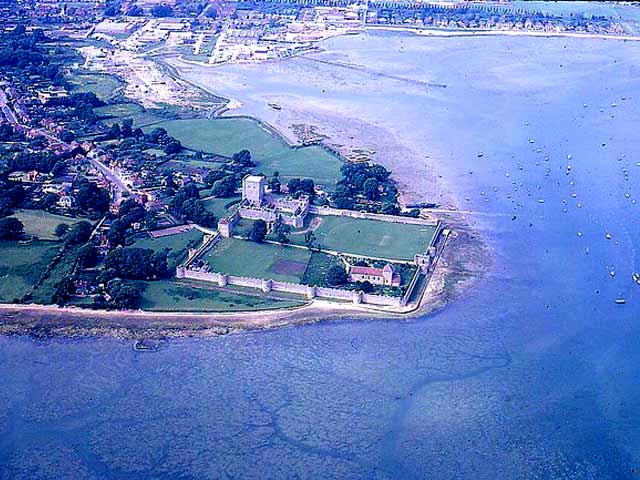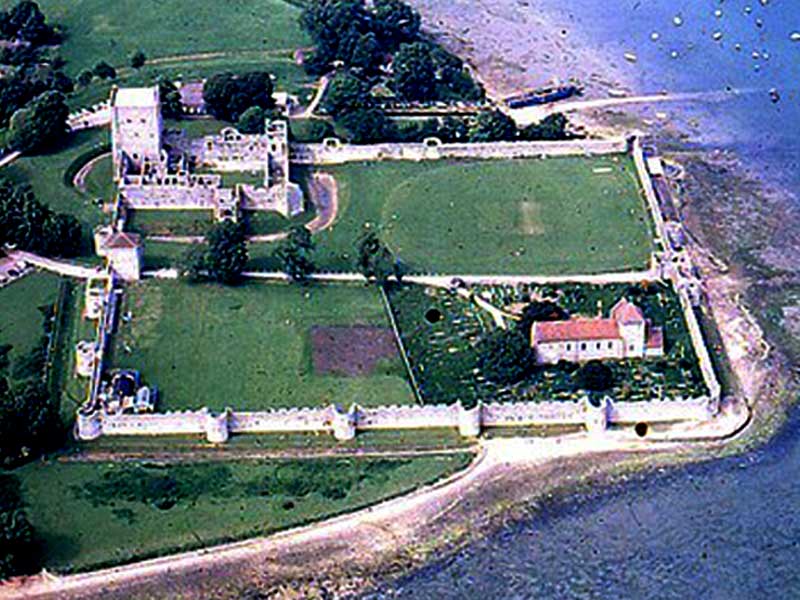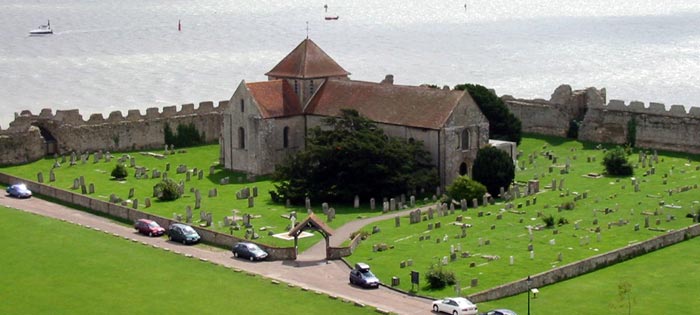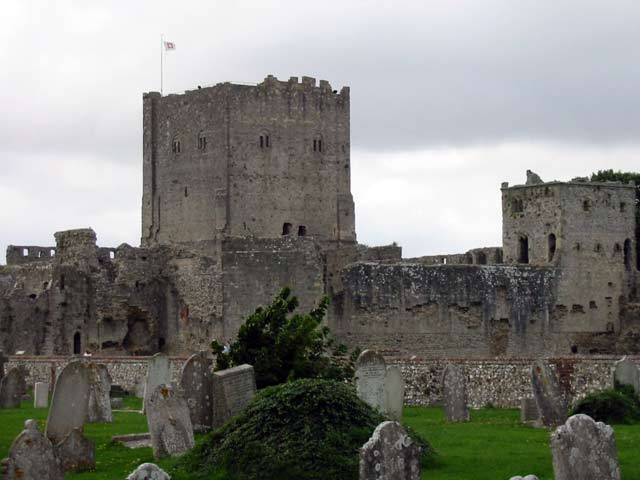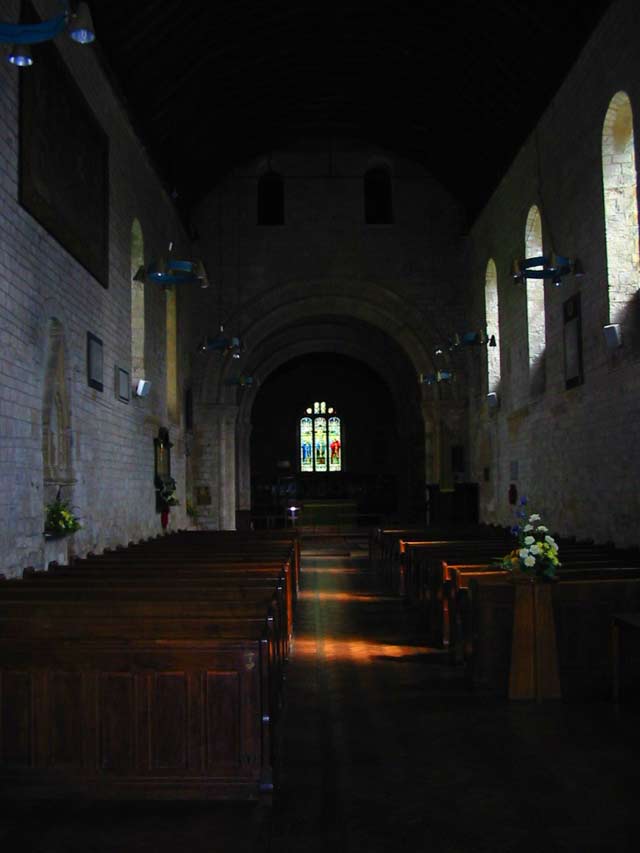Portsmouth
Too Many Homes Are Identical!The Englishman's telephone box is his castle. Like the London taxi, it can be entered by a gentleman in a top hat. - Mary Blume
Chichester Road
Twyford Avenue Source: ww2.portsmouth-college.ac.uk "Portsmouth from the Air in Colour" For other aerial examples of civilization density, see also:
However, This "Home" Appears to Be a One-of-a-Kind...The home to everyone is to him his castle and fortress, as well for his defence against injury and violence, as for his repose. - Edward Coke
Portchester Castle Source: ww2.portsmouth-college.ac.uk "Portsmouth from the Air in Colour"
I an shamefully unfamiliar with the castles of Great Britain. So I went to the web to find out more and ran across these lovely photos:
This is the priory
Looking back at the keep from the graveyard of the priory
The priory nave Source: sucs.swan.ac.uk/~cmckenna/ttff/portchester
A further search turned up the following information: Portchester Castle Portchester Castle is surrounded by the most complete Roman walls in Northern Europe. HistoryThe Romans introduced a system of coastal defences, now called the "Saxon Shore Forts" to protect the country against Saxon raids from Germany and Denmark. They were built along the eastern and southern coast from Brancaster to Portchester (Portus Adurni) in the 3rd century. Recent excavations indicate that the forts were intensively occupied during the time of Carausias, a Belgian sailor commissioned to clear the channel of pirates in 285. He appears to have waited until the Saxons had laden themselves with booty before attacking, thus enriching himself in the process. The Romans discovered this and he fled to Portchester to lead a successful rebellion, setting himself up as Emperor of Britain, a title he held until 293 when he was murdered by his assistant Allectus. The fort may therefore have been built or reconstructed to resist reconquest by the Romans. The fort consists of a square area measuring 210 yards across and encloses 9 acres with 20 feet high walls, 10 feet thick, constructed of coursed flint bonded with tiles or limestone slabs. From the front face "D" shaped bastions project at 100 to 200 feet intervals to take ballista (Roman catapaults). Excavations have shown that the Castle site was occupied extensively by the Saxons between the 5th and 10th centuries - probably as a defence against Viking invaders. During the Middle Ages the Great Tower (the Keep) was built by Henry I while Richard II spent £1700 on erecting a suite of domestic buildings (the Great Hall and kitchen) inside the bailey walls between the years 1396 - 1399. Apart from being a convenient place for embarkation of troops, the palace was close to the hunting in the Royal Forest of Bere. The importance of Portchester declined as Portsmouth grew and by 1441 the Castle was "ruinous and feeble". Although the Castle was sold in 1632 to Sir William Uvedale and thence to the Nortons of Southwick, the Crown leased it whenever necessary. Such occasions included the Civil War when it was used to billet troops, and the Dutch and French Wars when it was used to hold prisoners (up to a maximum of 5,000 men). In 1926 the heir of the Uvedales put the building in the care of the Department of the Environment and the public can now enjoy a recreation area in the shadows of the ancient walls. Source: hants.gov.uk/discover/places/portchestercastle.html
For more articles relating to Money, Politics and Law including globalisation, tax avoidance, consumerism, credit cards, spending, contracts, trust, stocks, fraud, eugenics and more
click the "Up" button below to take you to the page on "How Many Countries in the World?" Clicking "Up" from there will take you to the Index for this section. |
 Animals
Animals Animation
Animation Art of Playing Cards
Art of Playing Cards Drugs
Drugs Education
Education Environment
Environment Flying
Flying History
History Humour
Humour Immigration
Immigration Info/Tech
Info/Tech Intellectual/Entertaining
Intellectual/Entertaining Lifestyles
Lifestyles Men
Men Money/Politics/Law
Money/Politics/Law New Jersey
New Jersey Odds and Oddities
Odds and Oddities Older & Under
Older & Under Photography
Photography Prisons
Prisons Relationships
Relationships Science
Science Social/Cultural
Social/Cultural Terrorism
Terrorism Wellington
Wellington Working
Working Zero Return Investment
Zero Return Investment

